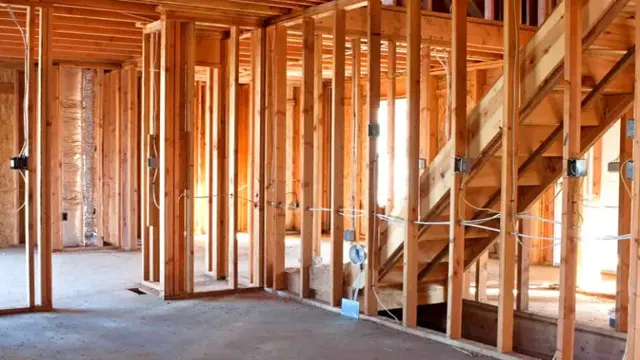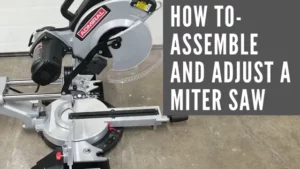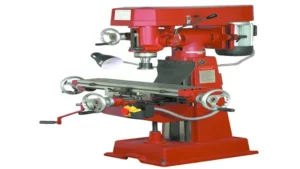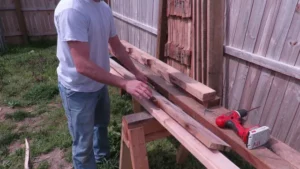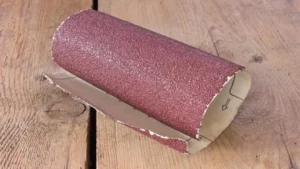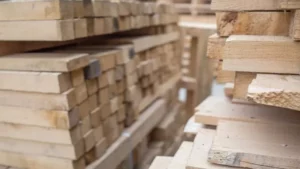Running wires in metal buildings can be a challenge that many builders, electricians, and DIY enthusiasts face. Unlike traditional buildings, metal structures have unique properties that can make it tricky to run wires, which can impact the overall functionality of the building. From understanding the structural design to selecting the appropriate wires, there is a lot to consider when running wires in metal buildings.
In this blog, we’ll explore some tips, tricks, and considerations to keep in mind when running wires in metal buildings, so you can ensure the job is completed safely and efficiently. Whether you’re working on your own DIY project or you’re a professional electrician, keep reading to learn more!
Preparing for Electrical Work
Running electrical wire in a metal building can be a challenge, but with the right preparation, it can be done efficiently and safely. Before starting any work, it is important to make sure you have all the necessary tools and supplies. This includes protective gear such as gloves, safety glasses, and a hard hat, as well as wire cutters, wire strippers, and a voltage tester.
It is also important to plan out the route that the wire will take, taking into account any obstacles or potential hazards. When running wire in a metal building, it is important to use conduit to protect the wires from damage and to ensure they are properly grounded. Make sure to follow all local electrical codes and regulations to ensure a safe and effective installation.
By taking the time to prepare properly and follow the necessary steps, you can successfully run electrical wire in a metal building and ensure a reliable source of power for your needs.
Check the Building Codes and Permits
If you’re planning on doing any electrical work, it’s important to check the building codes and permits required in your region. These codes and permits ensure that the project is safe and up to standard. Building codes often specify the requirements for the materials and techniques used during installations or repairs.
Permits, on the other hand, grant permission to carry out specific work and are typically issued by the local building department. It’s important to remember that these regulations vary between cities and states, so it’s crucial to check with your local authority to determine what is required for your project. Failure to comply with these codes and permits can result in costly fines or even legal action.
So, before you begin any electrical work, make sure you have completed all necessary inspections and have obtained the appropriate permits. This will ensure that your project is safe and legal.
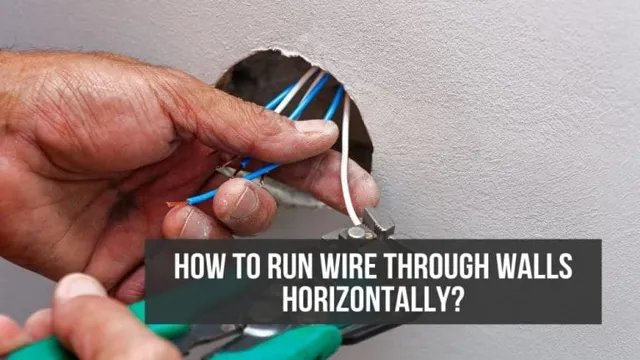
Identify the Path and Destination of the Wire
When it comes to doing electrical work, one of the first things you must do is identify the path and destination of the wire. This step is crucial to ensure that you do not damage existing wires or put yourself at risk of electrocution. Before you start drilling holes or cutting into walls, take the time to plan out the route of the wire.
This includes identifying where the wire needs to start and end, and any obstacles or potential hazards that may be in the way. By doing this, you can choose the best path for the wire and avoid any potential issues. Always remember to turn off the electricity before starting any electrical work and use caution when working with live wires.
By following these steps and taking the time to plan ahead, you can ensure a safe and successful outcome for your electrical project.
Selecting the Right Wires
When it comes to running wires in a metal building, choosing the right wires will ensure safety and efficiency. First, consider the type of wire needed based on the voltage and amperage requirements of the equipment that will be powered. Additionally, the wire size and insulation should be appropriate for the length of the wire run and the temperature of the building.
As metal buildings can experience high levels of moisture, it’s important to choose wires with a moisture-resistant coating to prevent damage and potential hazards. Lastly, be sure to follow all local codes and regulations for electrical wiring in your area. By taking these factors into consideration, you can properly select the right wires for your metal building and ensure a safe and efficient electrical system.
Choosing the Appropriate Gauge of Wire
When selecting the right wire for your project, there are a few key factors to consider. One of the most important of these is the wire gauge. Wire gauge refers to the diameter of the wire and can range from very thin to very thick.
The right gauge of wire for your project will depend on a variety of factors, including the amount of current that will be flowing through the wire, the length of the wire, and the electrical resistance of the wire itself. Choosing the wrong wire gauge can result in a range of issues, from poor connectivity to electrical fires. So, it’s important to take the time to carefully select the right wire gauge for your specific project.
Remember, a wire that is too thin will be unable to handle the current required, while a wire that is too thick will be expensive and harder to work with. It’s all about finding the right balance.
Choosing the Right Type of Wire Insulation
Choosing the right type of wire insulation can be a daunting task, especially for those who are new to wiring projects. Your wire insulation needs may vary depending on the nature of your wiring project. For instance, if you intend to install wires that will be subjected to high temperatures, you should opt for insulation that can withstand high temperatures, such as silicone insulation.
It is also important to consider the electrical and safety requirements of your project. If you’re operating under high voltage conditions, you may need insulation with a higher dielectric strength. Additionally, you might want to consider insulation thickness as thicker insulations are more resistant to damage from abrasion or punctures.
Always ensure that you consult with a professional or refer to the manufacturer’s guidelines before selecting the right type of insulation.
Installing the Wires
If you’re wondering how to run wire in a metal building, the process may seem daunting at first, but with the right tools and knowledge, it can actually be quite straightforward. Start by mapping out where you want to run your wires and make sure to adhere to any local building codes or regulations. Next, gather all necessary tools and materials such as wire cutters, conduit, and fasteners.
Begin by drilling holes in the metal studs or beams where you want to run your wire and then carefully feed the wire through the conduit. Secure the conduit to the metal framing using appropriate fasteners, ensuring that the wire is protected and won’t be easily damaged by any external factors. It’s crucial to check and double-check each connection to ensure that they are all secure and that no wires are exposed.
With some patience and attention to detail, you can successfully install wires in a metal building and create a safe and functional electrical system.
Plan the Route of the Wire Path
When it comes to installing wires, it’s important to plan out the route the wires will take before actually installing them. This means taking into account the length of the wire, the location of the devices or components that the wire will be connecting, and any potential obstacles or interference that may affect the performance of the wires. By taking the time to plan out the wire path, you can ensure that everything is properly organized and that the wires are able to effectively carry out their intended function without any issues.
Plus, it can also save you time and frustration down the line by preventing any unexpected issues or complications from arising. So, whether you’re setting up a home entertainment system or installing a new security system in your house, take the time to plan out the wire path before getting started – your future self will thank you!
Install the Metal Conduits
When installing metal conduits, it is important to understand how to properly install the wires that will go through them. The first step is to measure the length of the conduit needed to span the entire distance between two points. Once the conduit is cut to size, the wires can be installed by threading them through the conduit.
It may be helpful to use lubrication, such as a cable pulling lubricant, to make the process easier. It’s also important to ensure that the wires are not twisted or kinked as they are threaded through the conduit. Once the wires are installed, they can be connected to the appropriate electrical components and tested to ensure they are functioning properly.
By taking the time to properly install the wires, you can ensure that your electrical system runs smoothly and safely.
Secure the Wires Inside the Conduits
When it comes to installing wires, it’s important to not only focus on getting the job done quickly but also to do it securely. The first step to secure the wires is to ensure they are properly housed inside conduits. Conduits are tubes that are designed to protect the wires from damage and tampering, and are a mandatory requirement for most electrical installations.
Once the conduits are in place, it’s important to secure the wires inside them to prevent them from moving or coming loose. This can be done by using cable ties or clips to hold them in place. By doing this, you can ensure that the wires are well-organized inside the conduits, making it easier to troubleshoot and repair them in the future.
Moreover, it safeguards against potential accidents resulting from frayed or damaged wires. So, make sure to take the time to securely fasten the wires inside the conduits to keep your electrical installation intact for a long time.
Inspecting the Installation
Inspecting the installation of wiring in a metal building requires careful attention to detail. Before running any wires, it’s important to conduct a thorough examination of the building’s electrical system. This includes checking that the metal building is properly grounded and that there are no instances of electrical interference that could affect the performance of the wires.
Additionally, it’s necessary to confirm that the wiring meets local building codes and safety standards. When running the wires, it’s essential to use appropriate materials and techniques that are designed specifically for metal buildings. This may involve drilling holes in the metal walls or ceilings, or using conduit to protect the wires from damage.
Overall, ensuring that the installation is done correctly from start to finish will help to ensure the safety and reliability of the electrical system in the metal building. So, if you want to know how to run wire in a metal building, make sure you take the time to inspect the installation thoroughly before getting started.
Test the Installed Wires
Before turning on the power, it’s important to inspect the installation of the wires and electrical components. Start by checking the wires for any signs of damage or fraying, which could cause a short circuit or even a fire. Next, ensure that the wires are connected properly and securely.
A loose connection could create a dangerous situation and potentially lead to electrocution or a fire. It’s also important to verify that the wires are the correct size and type for the intended use. Using undersized or incorrect wires can result in voltage drop and overheating.
Finally, use a voltage tester to confirm that the power is off and that the circuit is not hot before handling any wires or terminals. Taking the necessary precautions and double-checking your installation will keep your electrical system safe and functioning properly for years to come.
Fix Any Issues with the Installation
When it comes to inspecting your installation, it is essential to pay attention to even the slightest details. One of the most common issues that people face during the installation process is improperly placed wires. These faulty wiring systems can lead to potential electrical hazards, which is why it’s crucial to get your wires checked by a professional.
Furthermore, you must look for leaks, clogs, or cracks in your piping system. A faulty pipe can lead to water damage, mold growth, and other significant problems. Lastly, make sure that your equipment is functioning correctly.
If you notice any strange noises or unusual vibrations, it could be an indication that your installation equipment needs servicing. By taking the time to inspect and fix any issues with your installation, you’ll ensure that your entire system runs efficiently and safely.
Conclusion
In sum, running wire in a metal building requires a sharp eye, a steady hand, and a little bit of know-how. With the right tools and techniques, you can navigate the twists and turns of metal construction and bring electricity to even the most remote corners of your building. So roll up your sleeves, grab your favorite pair of wire cutters, and let’s get wiring! Remember, if you find yourself in a bind, don’t hesitate to call in a professional electrician.
They may have fancier tools and more experience than you, but that doesn’t mean they can’t learn a thing or two from your DIY spirit. Happy building!
FAQs
What materials are needed to run wire in a metal building?
In order to run wire in a metal building, you will need wire, conduit, clamps, anchors, and fittings.
What are the best practices for running wire in a metal building?
It is important to plan out your wiring layout, use proper grounding techniques, and adhere to building codes and regulations when running wire in a metal building.
Can you run wire through metal studs in a metal building?
Yes, you can run wire through metal studs in a metal building using conduit, but it is important to use appropriate clamps and fittings to secure the wire.
How do you protect wire from damage in a metal building?
To protect wire from damage in a metal building, it is important to use conduit and secure the wire with appropriate clamps and fittings. Additionally, avoiding sharp edges and corners can also help prevent damage.
What size wire should be used in a metal building?
The size of wire needed in a metal building will depend on the electrical load and distance the wire needs to travel. It is important to consult with a licensed electrician to determine the appropriate wire size for your specific needs.
Can you run low voltage wire in a metal building?
Yes, low voltage wire can be run in a metal building, but it is important to use appropriate conduit and follow building codes and regulations.
How do you troubleshoot electrical issues in a metal building?
It is important to first check the circuit breaker and ensure that all connections are secure. If the issue persists, it may be necessary to consult with a licensed electrician who can diagnose and repair the problem.
